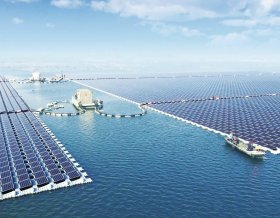
Establish A Local Network
 A couple of years ago, we were the Japanese Kyocer Corporation project. But did we hope that China would keep the subject aside?
A couple of years ago, we were the Japanese Kyocer Corporation project. But did we hope that China would keep the subject aside?
And China has announced that the largest floating solar power plant on Earth has finally been completed and connected to local electric grid. China has long been criticized for record carbon dioxide emissions into the atmosphere, so the solar power station is proof that the Chinese Government is making every effort to make the country a world leader in renewable energy.
A 40 megawattt solar power plant in the city of Khuinan in the province of Angha, was established by Sungrow Power Supply Co, a photovoltaic invertor manufacturer. By ironic, the floating power station was built on the flooded territory of the former coal deposit.
The floating solar farms are becoming increasingly popular around the world because their unique design takes into account the many issues of energy conservation and urban planning. The presence of such floating stations leads to the release of land in densely populated areas and to the reduction of water evaporation within the water bodies themselves. The colder air on the surface of the water also helps to minimize the risk of reducing the productivity of the photos, which is often associated with long-term exposure to high temperatures.
It's not the only solar power station in China. In 2016, the country submitted a similar floating construction with 20 MW in the same area. China also has a famous solar farm, Longyangxia Dam Solar Park, a vast ground-building of 16 square kilometres, which is considered to be the largest nuclear power plant on the ground. Many such facilities are planned to be built throughout the country.
This shift to solar energy is largely due to the rapidly falling cost of technology itself. By 2020, China could reduce the price of photovoltaic panels by more than three times, which would result in the use of solar power plants being no more expensive than coal. It had also announced plans to increase the use of renewable energy by 20 per cent in the near future.









